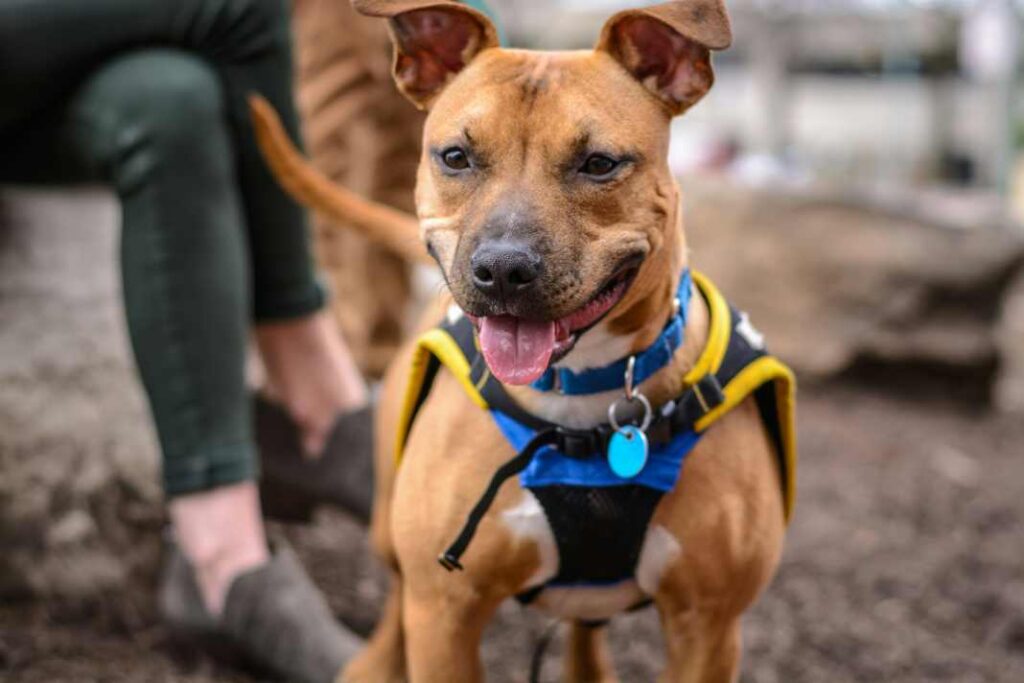When you welcome a furry friend into your life, you’re not just getting a pet — you’re gaining a family member who needs lots of basic obedience training. Along with an abundance of guidance, love, and, yes, a bit of training to thrive in your world.
Basic obedience training is the cornerstone of a happy, healthy relationship between you and your dog. It’s not just about teaching them commands; it’s about fostering communication, mutual respect, and understanding.
Let’s dive into the what, why, and how of basic obedience training, breaking down everything you need to know to get started on the right paw.
Click here for Expert Videos to Stop Dog Behavioral Problems!
What Is Basic Obedience Training?
Basic obedience training covers essential commands every dog should know — think of it as the ABCs of dog training. These commands include “Sit,” “Stay,” “Come,” “Down,” “Heel,” and sometimes “Leave it” or “Drop it.” Mastering these basics makes life with your dog smoother, safer, and more enjoyable for both of you.
Why Bother With Basic Training?
Imagine taking your dog for a walk without worrying about them lunging at every squirrel or pulling you off your feet. Or picture your furry pal calmly sitting by your side as guests enter your home instead of jumping up in a frenzy of excitement. These aren’t just daydreams but achievable realities with basic obedience training.
Training lays the foundation for a well-behaved dog who is a pleasure to be around. It reduces stress for both of you and even keeps your dog safer by ensuring they listen to you in potentially dangerous situations.

Getting Started: The Essentials of Training
- Positive Reinforcement: The golden rule of dog training is to use positive reinforcement. This means rewarding good behavior with treats, praise, or playtime rather than punishing the bad. Dogs are more likely to repeat behaviors that earn them rewards, making training a fun and rewarding experience.
- Consistency Is Key: Dogs thrive on routine and consistency. Use the same commands and rewards during training sessions, and try to train at similar times each day. This helps your dog understand what’s expected of them, making the training process faster and more effective.
- Patience Pays Off: Remember, every dog learns at their own pace. Some may pick up commands quickly, while others need more time and repetition. Stay patient, keep training sessions short and sweet (5-10 minutes for puppies, a bit longer for adult dogs), and never end on a negative note.
- Socialization: Training isn’t just about commands; it’s also about socializing your dog to different people, animals, and environments. Proper socialization reduces fear and aggression, making your dog more confident and well-adjusted.
Training Techniques and Tips
- The “Sit” Command: Start with your dog standing in front of you. Hold a treat close to their nose, then slowly lift it over their head towards their tail. As their head goes up, their butt will naturally go down. The moment they sit, say “Sit,” give them the treat and offer plenty of praise.
- The “Stay” Command: Once your dog has mastered “Sit,” introduce “Stay.” Ask your dog to sit, then open your palm in front of you and say, “Stay.” Take a step back. If they stay, even for just a few seconds, reward them. Gradually increase the distance and duration.
- The “Come” Command: This recall command is vital for your dog’s safety. Start in a quiet area without distractions. Put them on a long leash and step away. Then, in a happy tone, say “Come” while gently pulling on the leash. When they come to you, reward them with treats and affection.
- The “Down” Command can be a bit trickier, as it’s a submissive posture. With your dog sitting, hold a treat by their nose, then slowly bring it down to the floor between their paws and slightly forward. As they lie down to follow the treat, say “Down,” then reward them.
- The “Heel” Command teaches your dog to walk beside you rather than pulling ahead or lagging behind. Start by having your dog sit on your left side. Hold a treat in your left hand near your thigh, and say “Heel” as you step forward. Reward them for staying by your side.
Making Training a Part of Life
Basic obedience training is more than just a series of sessions; it’s a continuous part of your life with your dog. Incorporate commands into daily routines, like asking your dog to sit before meals or stay before crossing the street.
The more you integrate training into everyday life, the stronger your bond and communication will be.
The Crucial Role of Consistency in Dog Training: Building Confidence and Adaptability

In a world where consistency reigns, dogs thrive. They become not just well-behaved pets but confident, adaptable companions ready to tackle life alongside their human counterparts.
As we journey through the ups and downs of training, let’s remember the profound impact and importance of consistency in dog training. It’s more than a strategy; it’s the essence of a fulfilling and enduring partnership with our beloved dogs.
Continue reading: The Crucial Role of Consistency in Dog Training




